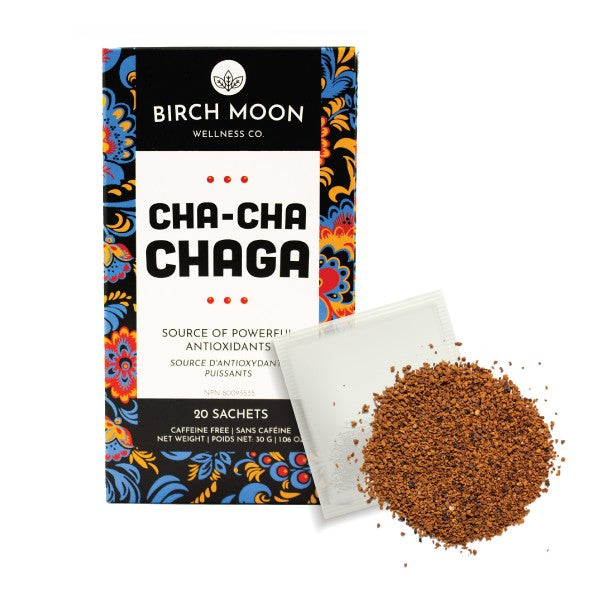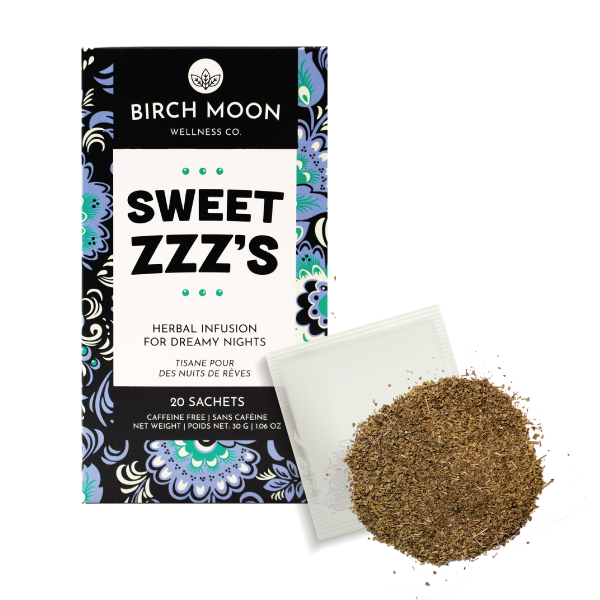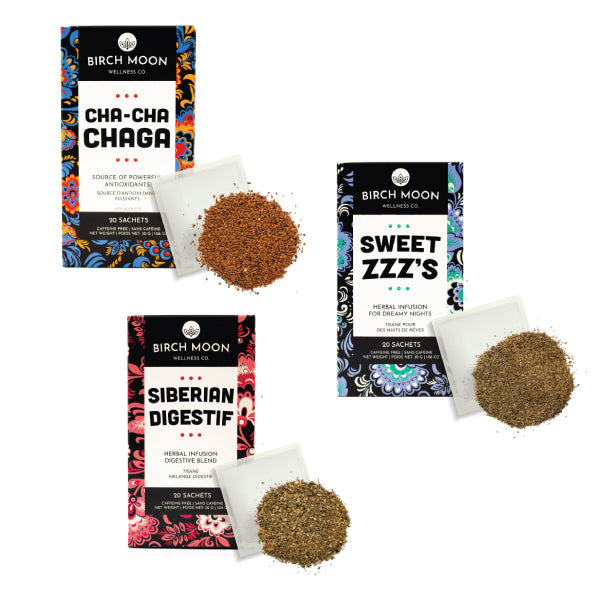In the realm of natural remedies, few stand as mysteriously compelling as Chaga. This unique fungus, often found clinging to birch trees in cold climates, looks unassuming at first glance. Yet, beneath its rugged exterior lies a treasure trove of health benefits that have captured the attention of traditional healers and modern scientists alike. In this article, we delve into the heart of Chaga's reputed powers, particularly focusing on its potential as an anti-inflammatory agent.

Traditionally harnessed in the frozen woodlands of Siberia, North America, and parts of Asia, Chaga has a rich history intertwined with ancient healing practices. Known scientifically as Inonotus obliquus, it has been used for centuries to boost overall health and treat a myriad of conditions. Today, as people increasingly seek natural ways to combat inflammation – a root cause of many chronic diseases – the spotlight turns to Chaga. Is this humble fungus a key player in the fight against inflammation, or just another health fad? Our journey through Chaga's history, scientific evidence, traditional uses, practical applications, and safety considerations seeks to uncover the truth about this intriguing natural healer.
In the dense, snow-draped forests of Siberia, North America, and parts of Asia, a peculiar organism quietly thrives on the trunks of birch trees. This organism, known as Chaga (scientifically as Inonotus obliquus), is not a plant but a fungus. It forms a symbiotic relationship with birch trees, growing as a dark, charcoal-like mass. To the untrained eye, Chaga might appear as a mere blemish on the tree's bark, but its unassuming appearance belies a reservoir of medicinal properties.
Origins and Habitat Chaga's existence is deeply entwined with the birch tree, a species that flourishes in cold climates. This fungus is harvested primarily from wild birch forests in Siberia, the Northern United States, Canada, and parts of North Asia and Europe. The extreme cold of these regions is thought to contribute to the density and richness of the nutrients found in Chaga.
Traditional Uses For centuries, Chaga has been a staple in traditional medicine across various cultures, particularly in Russia and Northern Europe. Indigenous peoples of Siberia first discovered its health benefits, using it as a herbal remedy for a range of ailments. Traditionally, Chaga was grated into a fine powder and brewed as an herbal tea. It was revered for its ability to boost immunity, improve overall health, and even as a treatment for cancer.
Modern Discovery and Health Benefits The modern world discovered Chaga's benefits much later. It's now known to be rich in a variety of vitamins, minerals, and nutrients, including B-complex vitamins, vitamin D, potassium, rubidium, cesium, amino acids, fiber, copper, selenium, zinc, iron, manganese, magnesium, and calcium. Most notably, Chaga is prized for its high content of antioxidant compounds, which contribute to its health benefits, including support for the immune system, lowering of blood sugar levels, and reduction of cholesterol.
Chaga and Anti-Inflammatory Properties One of the most intriguing aspects of Chaga is its potential anti-inflammatory properties. Inflammation is a natural response of the body's immune system but can lead to various chronic diseases when it becomes chronic. The antioxidants in Chaga, particularly the triterpenes and beta-glucans, are believed to help reduce inflammation by neutralizing free radicals and other compounds that can cause cellular damage.
A Symbol of Health and Longevity In many cultures, Chaga is more than just a medicinal fungus; it's a symbol of health and longevity. Its ability to survive and thrive in some of the harshest climates on earth is seen as a testament to its potent life-giving and healing properties.
As we delve deeper into the world of Chaga, we'll explore the scientific evidence behind its anti-inflammatory properties, its traditional uses, practical ways to incorporate it into daily life, and important safety considerations. This journey will not only reveal the secrets of this mysterious fungus but also help us understand how nature's gifts can be harnessed for our health and well-being.
Scientific Evidence on Chaga's Anti-inflammatory Properties
The intrigue surrounding Chaga extends into the scientific realm, where researchers have been examining its potential health benefits, including its anti-inflammatory properties. This section delves into the current scientific understanding of how Chaga may contribute to reducing inflammation.

Phytochemicals in Chaga Chaga is rich in a variety of phytochemicals, which are naturally occurring compounds found in plants and fungi that can have beneficial effects on health. These include polysaccharides, triterpenoids, and polyphenols. Polysaccharides, particularly beta-glucans, are known for their immune-boosting properties. Triterpenoids and polyphenols, on the other hand, exhibit potent antioxidant activities.
Antioxidants and Inflammation The antioxidants found in Chaga, such as superoxide dismutase (SOD), play a crucial role in its anti-inflammatory properties. Antioxidants help neutralize free radicals, which are unstable molecules that can cause oxidative stress leading to chronic inflammation. By reducing oxidative stress, Chaga may help lower the risk of diseases associated with chronic inflammation, such as heart disease, diabetes, and certain cancers.
Research Studies Several studies have explored Chaga's impact on inflammation. For instance, a study published in the "International Journal of Medicinal Mushrooms" found that Chaga extract could inhibit the production of harmful cytokines, which are involved in the inflammatory process. Another research indicated that Chaga could positively affect immune responses, potentially aiding in reducing inflammation-related conditions.
Limitations and Future Research While these findings are promising, it's important to note that much of the research on Chaga's anti-inflammatory effects has been conducted in vitro (in test tubes) or in animal models. There is a need for more extensive clinical trials to fully understand its effects on human health.
Chaga's Role in Integrative Medicine Integrative medicine, which combines conventional medical treatments with complementary therapies, is increasingly recognizing the potential of Chaga. As part of an integrative approach, Chaga is being considered for its potential to support conventional treatments, especially for conditions characterized by chronic inflammation.
The scientific exploration into Chaga's anti-inflammatory properties is ongoing. While initial studies are promising, more comprehensive human studies are needed to confirm these benefits. The next part of our journey will explore Chaga's use in traditional medicine and how various cultures have historically utilized its healing powers.
Chaga in Traditional Medicine

Long before modern science began exploring the potential of Chaga, it was a revered component in the traditional medicine of several cultures. This section explores Chaga's historical use and the enduring wisdom of these traditional practices.
A Staple in Siberian Folk Medicine In Siberia, Chaga has been used for centuries, primarily as a remedy to enhance immunity and overall health. Siberian shamans believed in the fungus's power to cleanse the body and spirit. It was often consumed as a tea, believed to fight infections and promote longevity.
Use in Eastern Medicine Chaga also holds a significant place in Eastern medicine, particularly in China, Korea, and Japan. In these regions, it was traditionally used to balance energy, improve vitality, and treat a variety of ailments. Chaga was considered a powerful tonic for improving life force or 'Qi.'
Chaga in European Herbalism In Northern European countries, including Finland and Russia, Chaga was used in folk medicine for its anti-inflammatory and detoxifying properties. It was often recommended for improving skin conditions, digestive health, and respiratory issues.
The Shamanic Connection In various indigenous cultures, Chaga was not only a physical remedy but also a spiritual one. Shamans used it in rituals and healing practices, believing in its ability to connect the physical and spiritual worlds. This holistic approach highlights the deep respect these cultures had for natural remedies.
Enduring Wisdom and Modern Relevance The traditional uses of Chaga, passed down through generations, offer a window into understanding how ancient cultures approached health and wellness. Today, as we seek more holistic and natural health solutions, the wisdom of these practices remains relevant, reminding us of the intricate connections between nature and human health.
Chaga's role in traditional medicine is a testament to its enduring value as a natural remedy. Its historical use across various cultures provides insight into its potential health benefits, particularly its anti-inflammatory properties. As we move forward, we'll look at practical ways to incorporate Chaga into daily life.
Practical Ways to Use Chaga

As we've explored the historical and medicinal background of Chaga, it's clear that this unique fungus offers various health benefits. But how can one incorporate Chaga into daily life, especially for its anti-inflammatory properties? This section provides practical advice on using Chaga effectively and enjoyably.
Chaga Tea The most common and traditional way to consume Chaga is by brewing it into tea. Chaga tea has a mild, earthy flavor and can be enjoyed on its own or blended with other teas for additional flavor. To prepare, simply steep chunks or powder of Chaga in hot water for several minutes.
Chaga Tinctures and Extracts For a more concentrated form, Chaga tinctures and extracts are available. These can be added to water, tea, or smoothies. Tinctures are particularly beneficial for those looking to consume Chaga for specific health purposes, as they often contain a higher concentration of the fungus's bioactive compounds.
Chaga in Culinary Uses Chaga's subtle flavor allows it to be incorporated into various recipes. It can be added to soups, stews, or even used as a spice rub for meats. Chaga powder can also be included in baking recipes for a nutritious boost.
Chaga Supplements For ease of use, Chaga is also available in capsule or tablet form. This is a convenient option for those who want to include Chaga in their health regimen but may not have the time to prepare teas or meals.
Skincare Products with Chaga Given its anti-inflammatory and antioxidant properties, Chaga is increasingly being used in skincare products. Chaga-infused creams and serums can help soothe the skin and reduce inflammation and redness.
Safety and Dosage While incorporating Chaga into your daily routine, it's important to consider safety and appropriate dosage. As with any supplement, it's advisable to consult with a healthcare provider, especially if you have underlying health conditions or are taking other medications.
In summary, there are numerous ways to incorporate Chaga into your daily routine, from brewing it as a tea to using it in culinary dishes or skincare products. By doing so, you can potentially reap the benefits of its anti-inflammatory properties. The final section of our article will discuss safety considerations and how to choose the right Chaga products.

Safety and Considerations When Using Chaga
While Chaga is celebrated for its potential health benefits, especially its anti-inflammatory properties, it's crucial to approach its use with an informed understanding of safety and considerations.
Consulting Healthcare Providers Before adding Chaga to your health regimen, particularly if you have existing health conditions or are taking medication, it's important to consult a healthcare provider. This ensures that Chaga does not interfere with other treatments or conditions.
Quality and Sourcing The quality and sourcing of Chaga are vital. Wild-harvested Chaga, especially from clean, unpolluted areas, is generally preferred. Sustainable harvesting practices are also important to preserve this natural resource.
Possible Side Effects While Chaga is generally considered safe for most people, some may experience side effects such as digestive discomfort. It's important to start with small amounts to see how your body reacts.
Interactions with Medication Chaga can interact with certain medications, especially those for diabetes and blood clotting, as it may affect blood sugar levels and blood clotting processes.
Choosing the Right Product With the growing popularity of Chaga, the market is flooded with various products. Look for products that specify the source of the Chaga and have minimal processing to ensure you're getting a pure, potent product.
Moderation and Long-term Use Like any supplement, Chaga should be used in moderation. Long-term effects are not well studied, so periodic breaks from using Chaga are advisable.
In conclusion, while Chaga presents an exciting natural remedy with anti-inflammatory properties, it's important to use it responsibly. Understanding these safety considerations and choosing the right products will help you maximize the potential benefits of Chaga while minimizing risks.





